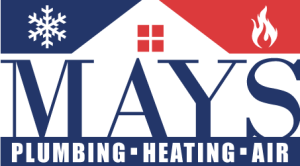Unblock the Blockages: Mastering DIY Techniques in Plumbing for Every Household
Nearly every homeowner has faced a plumbing issue at least once in their lifetime. Plumbing problems can be a major source of worry and discomfort, not to mention the expense involved in getting them fixed by professionals. However, with a little bit of knowledge, you can tackle minor plumbing issues with a do-it-yourself (DIY) approach, thereby saving time and money.
If you want to be your own plumber, this extensive guide on DIY techniques in plumbing is for you. We’ll give you an understanding of the basics, help you diagnose common issues, and cover easy-to-follow techniques to fix various plumbing problems. So put on your work clothes, grab your tools, and let’s get started!
Understanding Basic Plumbing
The first step to mastering DIY techniques in plumbing starts with understanding your household plumbing system’s basics. Every plumbing system consists of two subsystems: The supply system, which brings fresh water in, and the drainage system, that takes waste water out.
The water supply system works under pressure, primarily to allow water to reach all areas of your house, whether upstairs or downstairs. Channels through which fresh water enters your home, such as faucets, showerheads, dishwashers, and toilet tanks, are all elements of this system.
The drainage system, also known as the DWV (Drain-Waste-Vent), operates based on gravity. It directs waste water downwards into the sewer or septic system your house is connected to. Any waterborne wastes in your home, such as from the sinks, showers, and toilets, are evacuated through this system.
DIY Techniques for Common Plumbing Problems
1. Clogged drains
A clogged drain is probably the most common plumbing issue that homeowners deal with. Materials like food particles, hair, and grease can build up over time and block your pipes. However, you don’t always need a plumber to unclog these pipes. Here are some DIY techniques you can use:
Plunging
A good old-fashioned plunger can work wonders on clogged drains. In preparation for the task, make sure you have enough water in the sink to cover the plunger’s base. Position the plunger over the drain and pump vigorously. The suction created can help dislodge the clog and clear your drain.
Using a plumber’s snake or hand auger
If plunging doesn’t work, consider using a plumber’s snake or a hand auger. This is a specialized tool that you insert into the drain and twist to break up the blockage.
2. Running toilets
A running toilet can waste gallons of water and should be fixed immediately. Not all cases require professional help; some simple DIY techniques can work effectively.
Check the fill tube
Ensure that the fill tube isn’t inserted too deeply into the overflow tube. Adjust it if necessary, so it only goes about an inch into the tube.
Adjust the float
Most times, a running toilet is caused by a float that’s set too high. If the float is set so high that the fill valve doesn’t shut off properly, water flows into the overflow tube, causing the toilet to run. Adjusting the float to the correct level can rectify this problem.
3. Leaky faucets
Leaky faucets are another common plumbing problem. Not only are they annoying, but they also waste a significant amount of water over time. Here are some DIY methods you can use to fix a leaking faucet.
Replace the washer
Most faucet leaks are usually caused by a worn-out washer. Turn off the water supply, remove the handle of the faucet and the packing nut, which will expose the stem. Remove that as well and you’ll find the washer. If it’s damaged or worn out, replacing it can usually fix the leak.
Reseat the faucet
If replacing the washer doesn’t stop the leak, try reseating the faucet. This involves removing the faucet and using a resurfacing tool to smooth out any irregularities that can cause leaks.
Conclusion
Navigating minor plumbing issues needn’t be a full-scale panic or a call to the nearest plumber. Most common problems have simple solutions that you can take care of yourself with the right tools and a little knowledge. With the information laid out in this article, you will be well on your way to mastering DIY techniques in plumbing and handling most of the common household plumbing issues with confidence.
Remember, while these tips can help you handle minor issues, some problems are best left to the professionals. If you’re unsure or if a problem persists, it’s always best to call a professional plumber to avoid any damage to your plumbing system.




